I suppose the first question is, why would anyone want to use the Kodak Cresta II for serious photography – it’s a joke, right? Well, you might say the same about the Holga or pinhole cameras, but each of these produce unique images that are different and vaguely nostalgic; so it is with the Cresta II.
At age nine, I was bought a Kodak 127 Brownie, a camera that I used until I went to art school at the age of 19. During that time, I used it to take photographs, learned to process negatives and make prints in the school darkroom. At no time did I think that this was not a proper camera, since I had no experience of anything else. My friend at the time had a Kodak folding camera that was interesting, but I regarded mine as a more modern alternative and easier to use.
Fast forward 60 years to January 2021, a year after I decided to return to film photography and I was working on a long project around the Southwest Coast path from Plymouth to Wembury, the only part of this iconic coastal path that goes through a relatively modern, if fading, industrial and historical area. I still have the 127 Brownie, but thought a 120 version would be more practical for the sort of shots I was interested in. I bought a Cresta II from an auction site for less than 3 pounds and it arrived in 3 pieces, so I glued the broken parts back together and used some tape to ensure a good light seal; a good clean up and it was a working camera again.
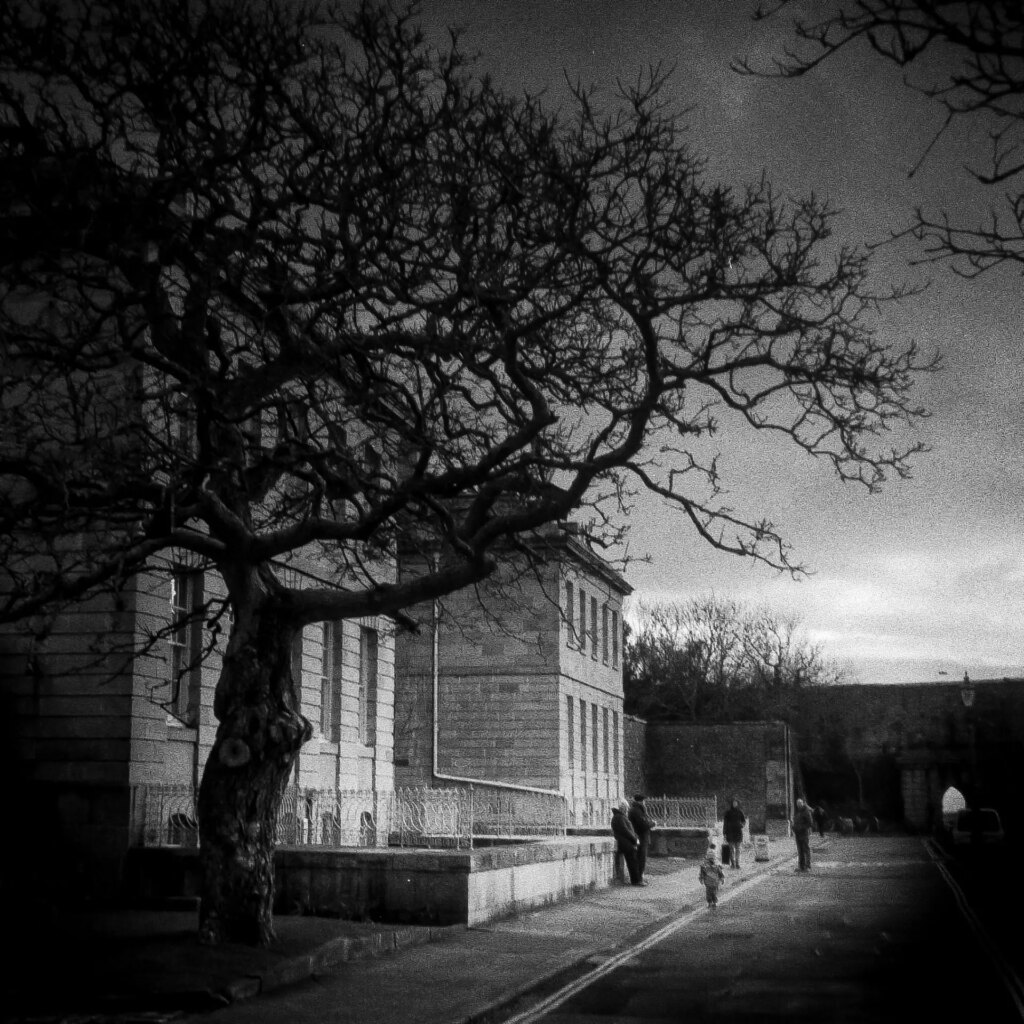
My object in using the camera was to get some images that were not straight forward reproductions of shots that have been taken time and again and to get some sense of the historical value of the place photographed. The five photographs in this article, among others I took with this camera were used in my Zine series of urban landscapes and taken between January and April 2021 after the Lockdowns.
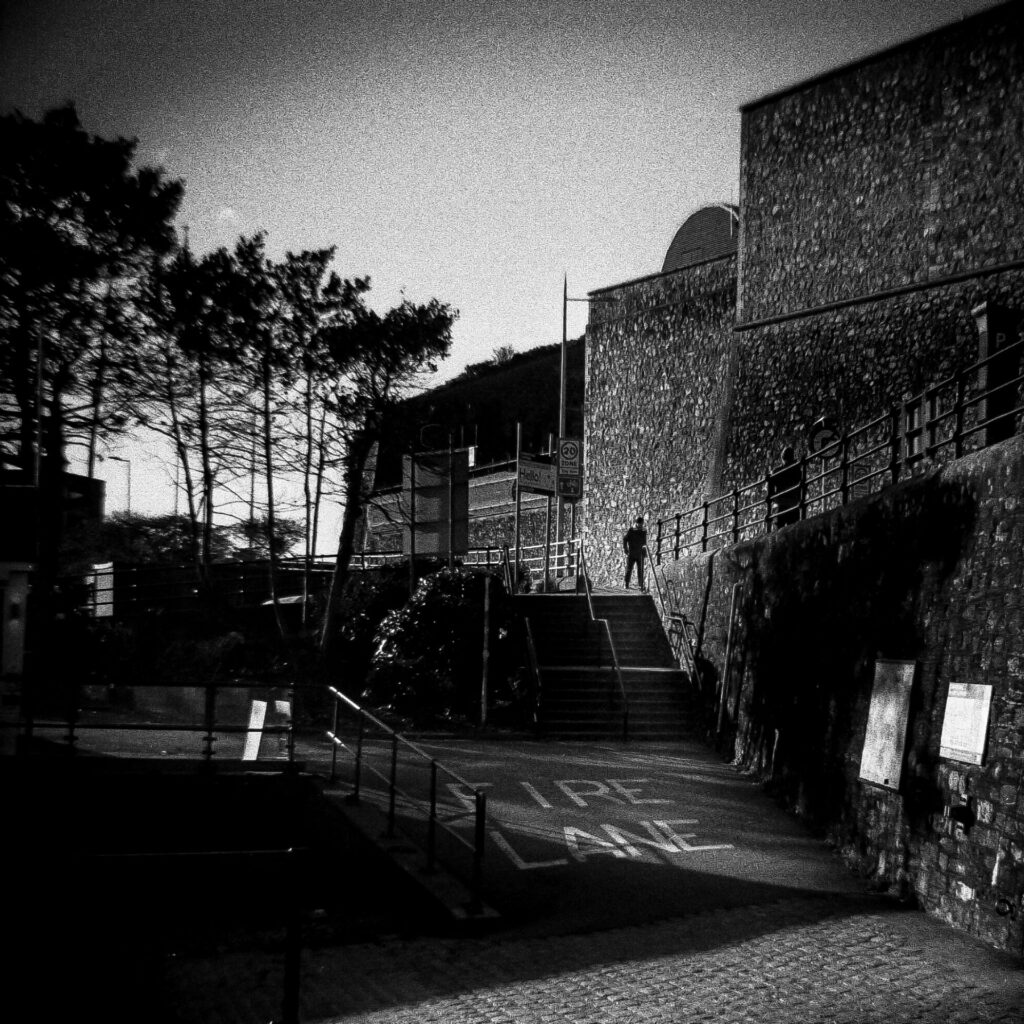
Taken in the early morning or late afternoons, the weather was generally good with late winter sunshine and long shadows, perfect for a camera that has a single shutter speed and aperture: I rated the film speed according to the light available, usually HP5+ from 320asa up to 1600. I took all photographs wanting high contrast images, where possible. Clearly, sharpness is not going to be great, but as Cartier-Bresson was reported as saying, “…sharpness is not everything.”
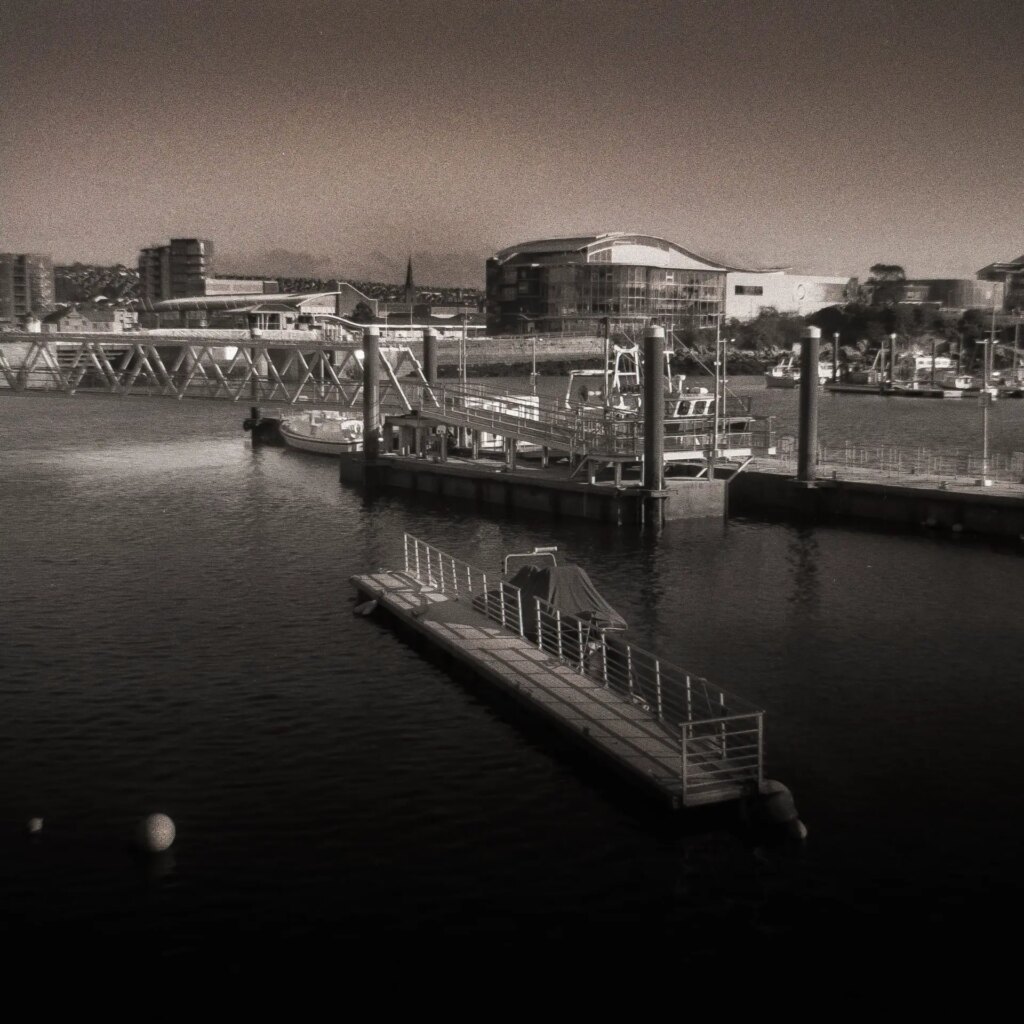
All of my shots are on or close to the Plymouth waterfront, a working harbour to this day, with plenty of history and a few modern touches. Access to the waterfront has been extended over recent years and water taxi services have developed to use our waterways to get around as well as a tourist attraction.
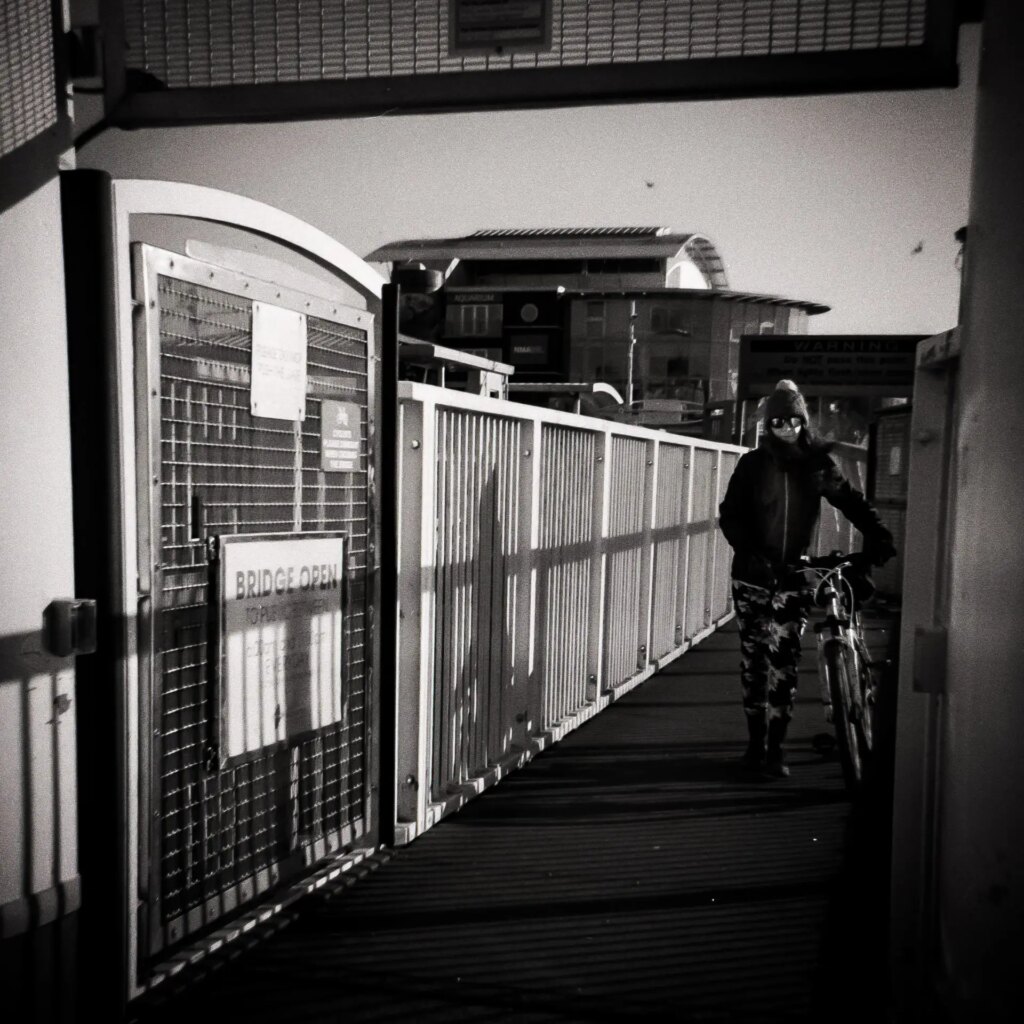
People are generally incidental to my photography, but where they do appear, they definitely add something to the shot, as in the case of the footbridge from the harbour to the aquarium and Coxside. The dismounted cyclist saves the photograph from being a random piece of coverage, adding interest and shadow to the shot.
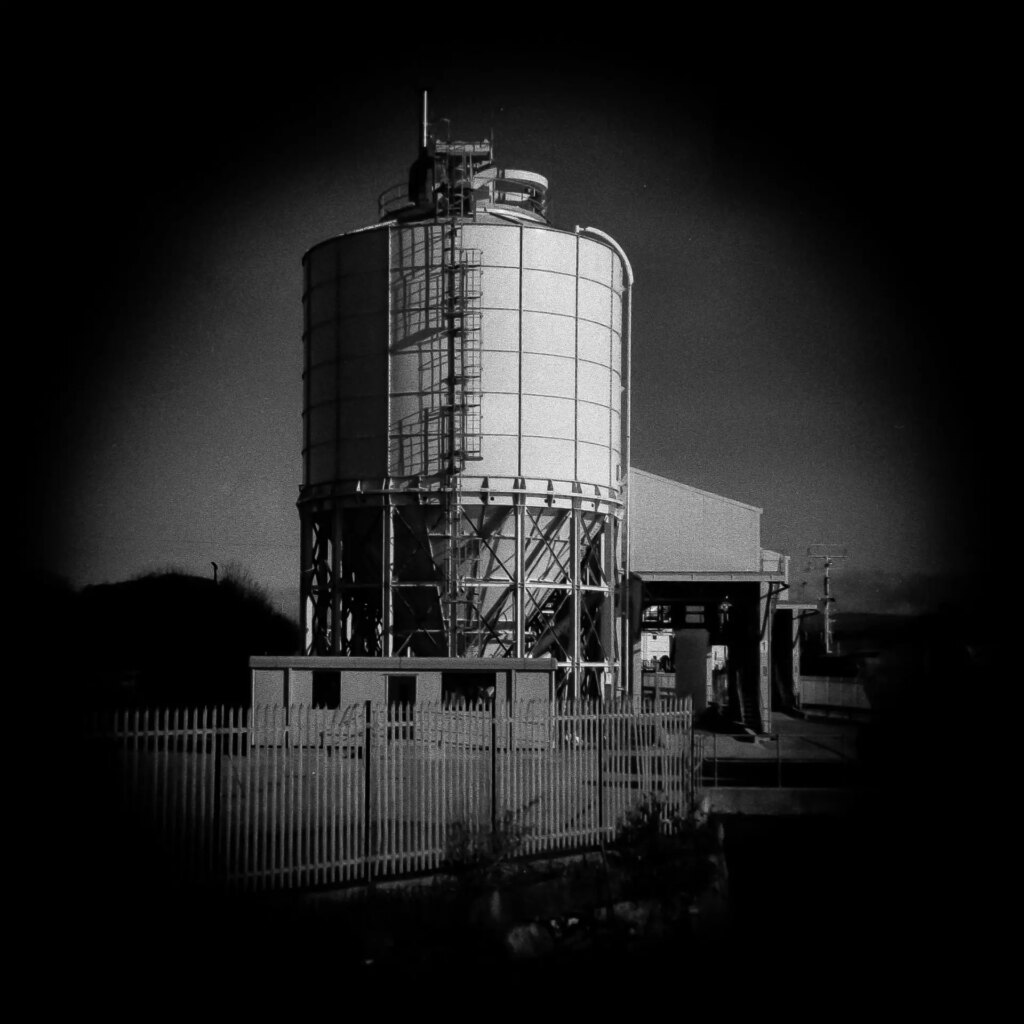
The last shot is taken on the Cattedown Wharves, heavily vignetted, not entirely by me in the edit. I spent some time around this area where a little industry still survives, but with hardly any discernable activity. The storage tank close by to an oil refinery and gas holders, seemed to me to be iconic and stood out in its relative isolation. The vignette is a sort of homage to early cinema and a “That’s all Folks!” sign off.
I have continued to use the Kodak Cresta II whenever I want a slightly quirky image and am rarely disappointed in being able to get an image or images that I can use – it is not an everyday carry, but is worthy of a place in my camera collection. The Cresta II is far from a perfect camera and is not without its challenges, not least a long push down on the shutter release making it difficult to get a steady shot. You need to make adjustments to film speed and developing times unless the light is very good, so it is not a straightforward point and shoot. But it is not a joke camera and you can get some seriously good and slightly unique images using it.
More of my images can be seen here: Richard de Bulat | Flickr
Share this post:
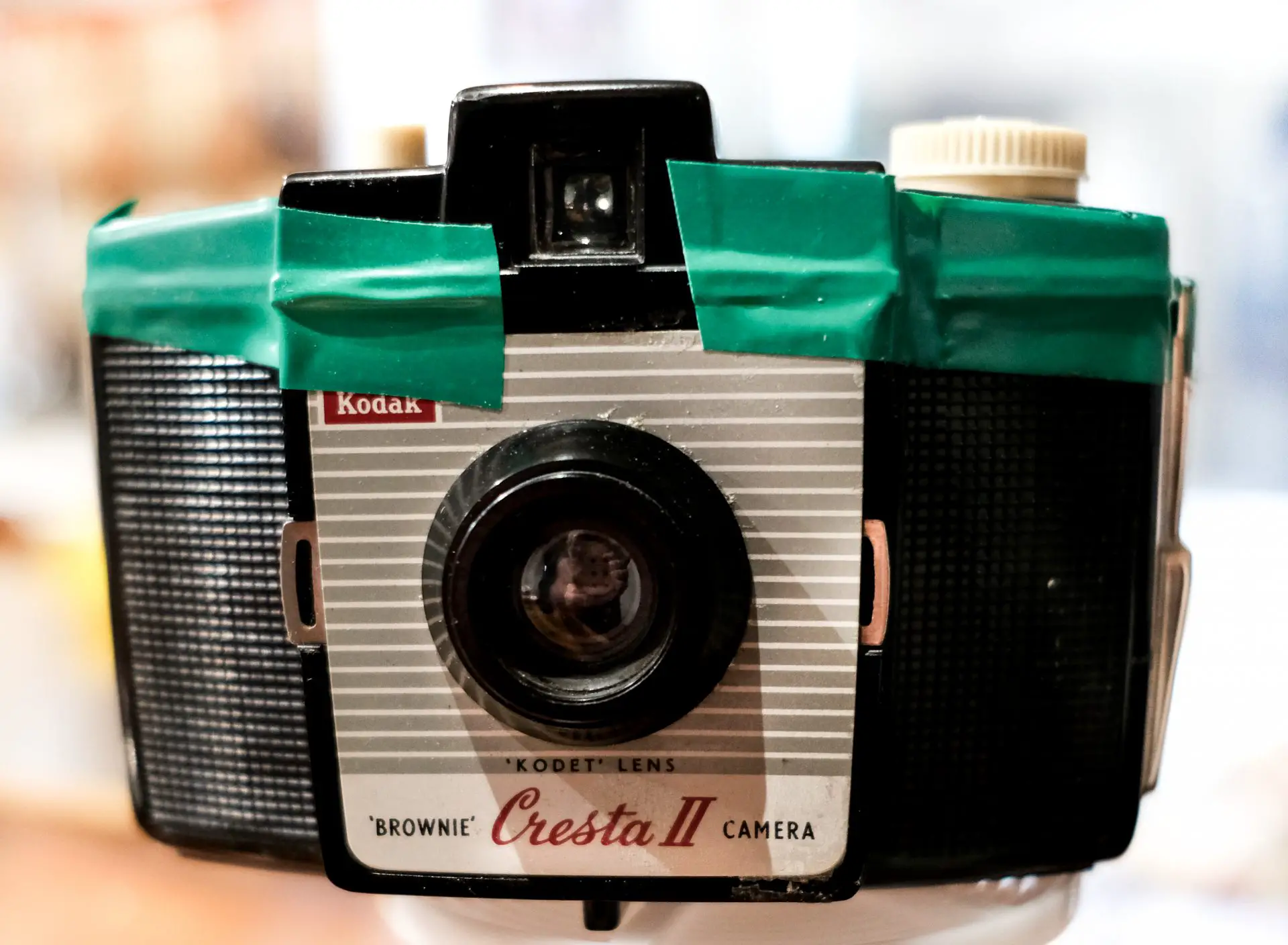
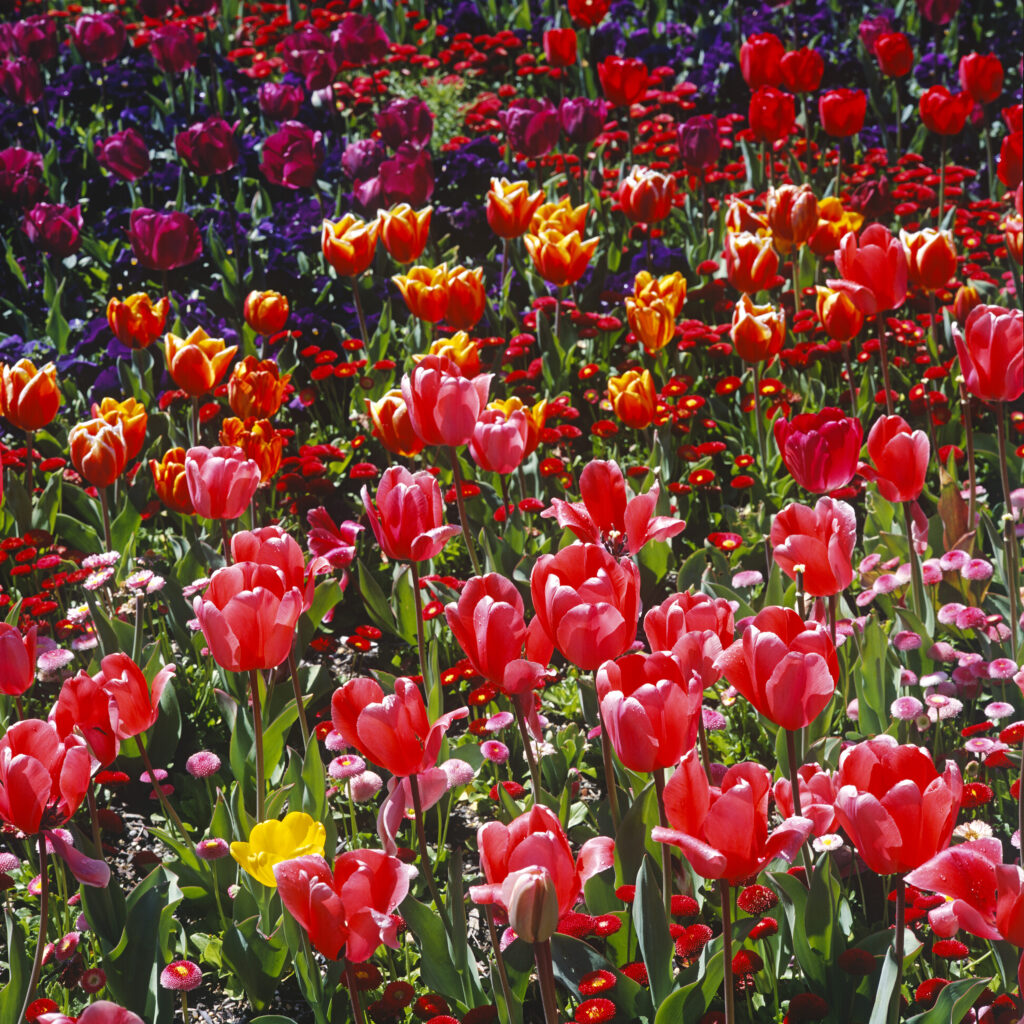
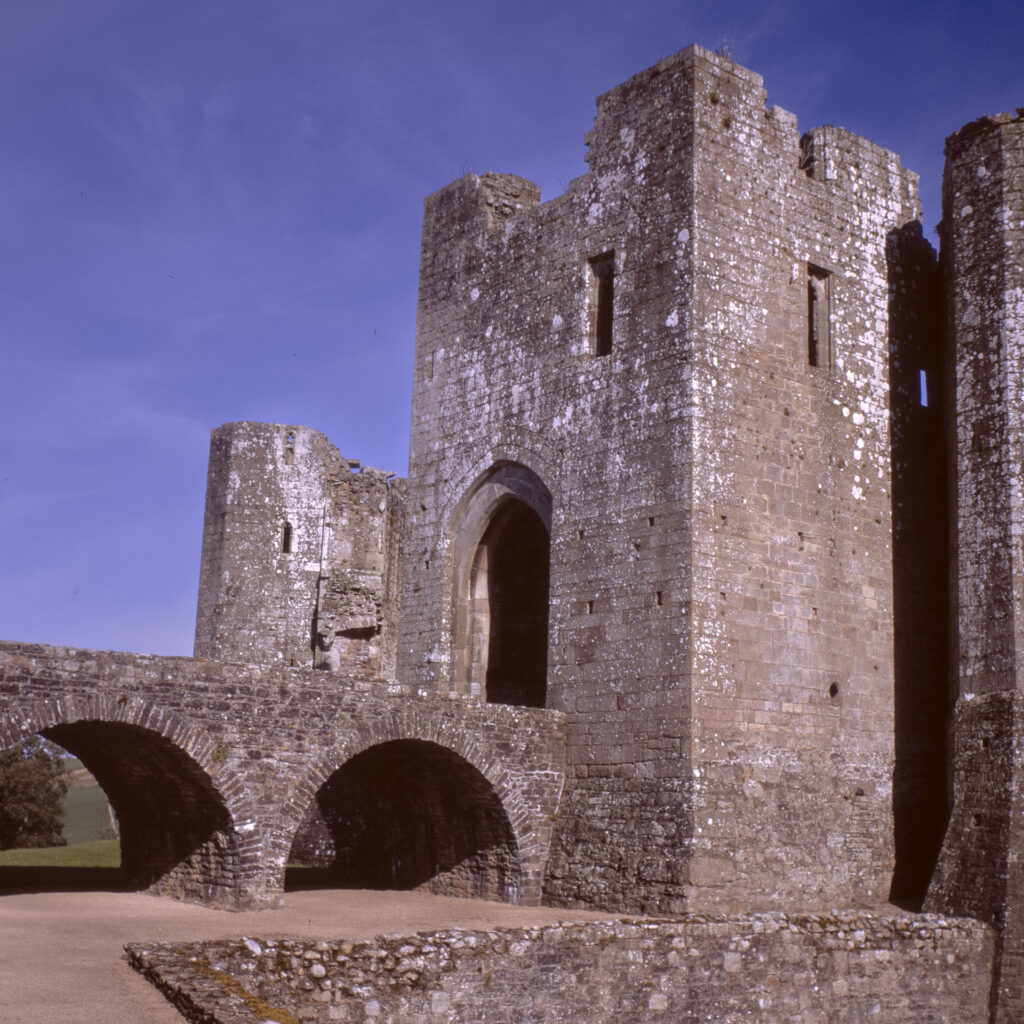
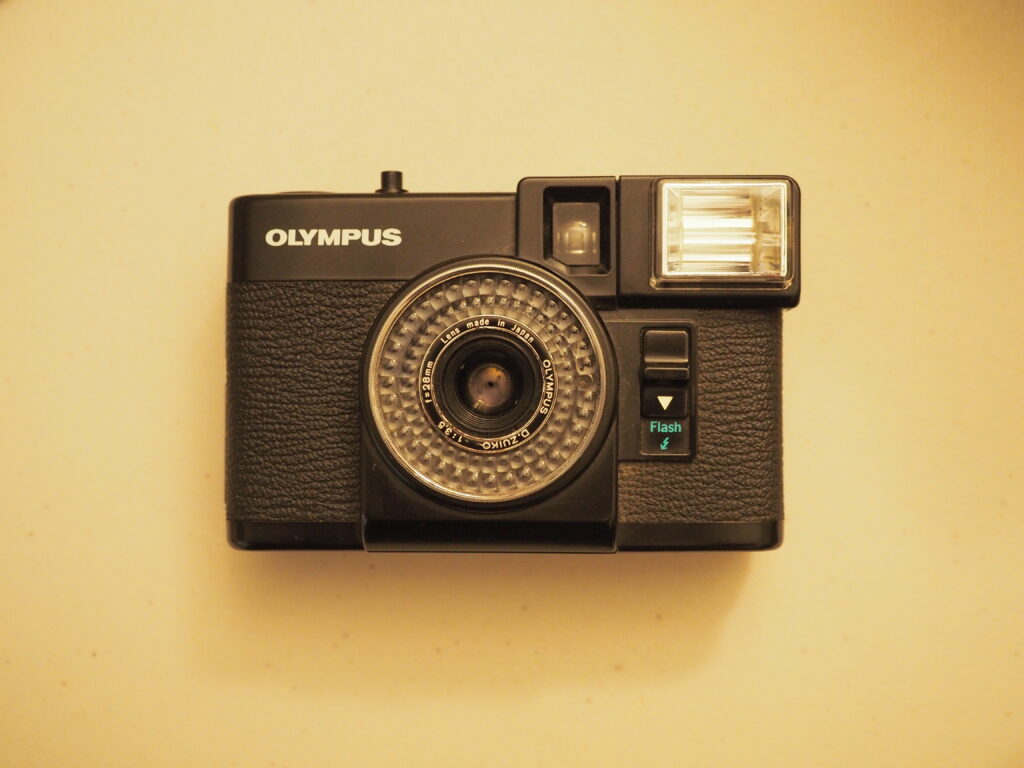
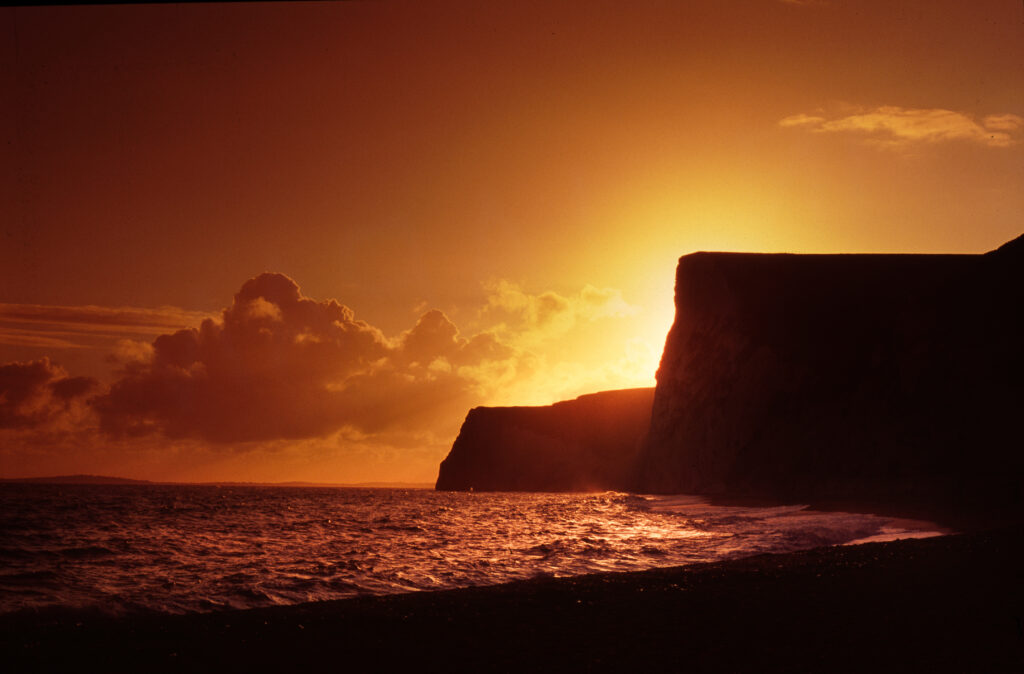




Comments
Stewart Waller on 5 Frames with the Kodak Cresta II – By Richard de Bulat
Comment posted: 18/10/2022
Comment posted: 18/10/2022
Comment posted: 18/10/2022
William on 5 Frames with the Kodak Cresta II – By Richard de Bulat
Comment posted: 18/10/2022
Comment posted: 18/10/2022
Steve Fretz on 5 Frames with the Kodak Cresta II – By Richard de Bulat
Comment posted: 18/10/2022
I just started following you on Flickr - looks like a great photostream!
Comment posted: 18/10/2022
Richard de Bulat on 5 Frames with the Kodak Cresta II – By Richard de Bulat
Comment posted: 18/10/2022
Comment posted: 18/10/2022
Comment posted: 18/10/2022
Comment posted: 18/10/2022
brad s sprinkle on 5 Frames with the Kodak Cresta II – By Richard de Bulat
Comment posted: 24/10/2022
The apparent sharpness of your images is quite impressive. I have to use a tripod these days with those slow shutter speeds. Great job!
Cheers,
Brad
Comment posted: 24/10/2022
Comment posted: 24/10/2022
Paul on 5 Frames with the Kodak Cresta II – By Richard de Bulat
Comment posted: 28/10/2022